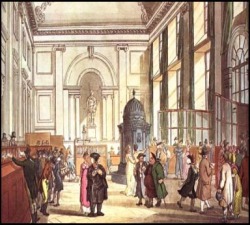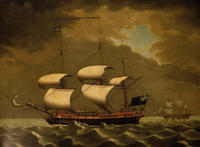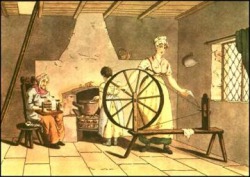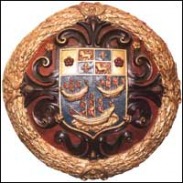Economy

The English Empire during the 18th century was considered the leading nation in European Trade. Besides dominating the trade, the English Empire was also the first among western nations to begin industrializing. The backbone of the industry was the empire’s agricultural productions. Agriculture increased the profit of the industry, as ideas such as field management greatly expanded productivity. Enclosures were invented, which quickly replaced the open fields used before. This growth was vital because of the rapidly growing population. By 1688, England and Wales alone were homes to almost five million people. The English Empire’s domestic industry blossomed likewise, with the large amount of workers seeking dual jobs.
Trading Process

The main trading process would often begin by sending ships off to Africa, bringing goods with them, which would trade for mainly slaves. These enslaved people would then sent to regions in the Caribbean, or to the New World. Trade for items such as sugar, tobacco, rice, rum, and cotton would occur between the people in those regions and merchants. These goods, which consisted mainly of raw materials, would be brought back to the the English Empire afterward. The traders would often exchange for goods, and re-sell or trade the materials received at a higher price, bringing in profit. This formed the Triangular Trade, which contributed greatly to empire's profits from trade for centuries. The empire also tried to follow the theories of mercantilism, in effort to increase their wealth and imperial self-sufficiency. Therefore, the British Acts of Trade was passed on, and colonial markets for the British were created. British became the only market for many colonial goods, as the act limited colonial trade solely to the British.
Industry

The English mainly exported wool and textiles. A few important contributions to the textile industry were the inventions of the Spinning Jenny, the Flying Shuttle, and the Spinning Frame. This new technology augmented the speed of making cotton products, and the number of workers needed for production. The new machines also helped the industry to meet the large demand for cotton goods. Many of the newly introduced technology became one of the many causes of the British Industrial Revolution, which happened later, between the 18th century to the 19th century.
Trade

The empire’s colonies increased immensely the amount of trade within the empire. An alarmingly quantity of goods, valued over one million pounds, were shipped to London one year. Plantations for tobacco, rice, sugar cane and cotton were soon established in the colonies in America. Due to the effort and labour required to run these plantations, the owners began buying slaves, thus beginning the African Slave Trade with began around the 16th century. The slave trade caused a huge impact on Africa, as it was estimated that a total of eleven to twelve million Africans were shipped off across the Atlantic as slaves. This number however, did not include the number of deaths during the harsh passage to their destination. Those who managed to stay alive through the entire journey, would then be sold as objects, and became others' "properties." Despite the cruelty of the slave trade, the merchants and others remained engaged in the trade for it brought a huge profit to them.
However, trade also extended into Asian waters. The trade activities were, for the most part, regulated by the East India Company. This large company was based in London, and held a monopoly over trade for quite some time. The products the company’s fleets bring back made a contribution to English life. For example, tea from China became a huge hit, and to today, it still remained a popular drink in Britain. Other goods which enhanced the English life were silk and porcelain from China, spices from the Netherlands, and textiles from India.
